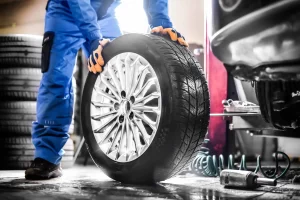If you consider having dents repaired on your vehicle, you should know how to identify the different types. Understanding the different types of dents can ensure you have the best results.
Multipoint dents
Dent repair can be a frustrating experience for a car owner. The best way to avoid it is to learn how to identify the different types of dents and how to fix them. It will keep your vehicle looking its best and prevent damage to other parts.
There are two basic types of dents: round and sharp. Round dents are the least complicated to repair. They can usually be fixed with Paintless Dent Repair (PDR) techniques.
Sharp dents are much more complex to deal with. These dents occur when a sharp object hits your vehicle. They can be caused by many factors, such as an impact or a strong wind blowing something into your car.
Creased dents are another type of dent that requires expert skill to remove. Creased dents happen when an object is dragged along a panel, or a sharp object strikes a metal surface. If not removed, they can continue to cause further dents.
Sharp dents
Sharp dents are common after a collision. They can occur as single dents or multiple dents. It’s essential to learn how to repair them.
Depending on the size and shape of the dent, there are many methods for removing them. Some of them are do-it-yourself, and others require professional help.
Hailstones typically cause a round dent or a ball hitting a car. Round dents are the most obvious and the easiest to fix. Commonly, they are found on the roof, bumper, and hood of a car. The dents will be pretty shallow and leave a small mark on the vehicle’s surface.
Crease dents
If you have recently noticed a dent in your car, it’s essential to know what kind it is. There are many different types of dents, and each one can be difficult to get rid of. It can also impact the resale value of your car.
There are four basic types of dents: dings, crease dents, sharp/angular dents, and multipoint dents. Each class can affect the paint on your vehicle in different ways. While most dents can be easily fixed by a DIY method, these methods are only sometimes guaranteed to work. Whether you need to have your dent removed or want to touch up the paint, it’s best to hire a professional.
Creased dents are more severe than round dents. These dents are created when a sharp object brushes against the surface of your car. They are often found on side panels or the hood of a car. Crease dents can cause a lot of damage to the metal on your vehicle’s exterior. The creases can be hard to remove without replacing the metal, and the dent can worsen over time.
Non-chargeable repairs
The acronym, as mentioned earlier, comes in handy. If you are lucky enough to live in a council-owned stomping ground, you can be assured that your tenancy is not a free for all. Thankfully, the council has a bevy of skilled tradesmen to keep things in order. You should be advised to ensure you are on the good list before your lease expires. Not only will you avoid a slew of unnecessary headaches, but you will also avoid a visit from the specter that a settler might be up to their snuffy ways. That said, don’t expect to be handed a check in the mail when you vacate your stomping grounds. Of course, you will still be liable for all bills.
Cost
Car dent repair costs vary from shop to shop, depending on the location, quantity, size, and type of car. You should get multiple estimates if you still need to determine how much a dent will cost to fix.
Typical costs for a dent can range from $75 to $500. It’s based on the size of the dent and whether the vehicle has a paint job. Some dealerships charge more than independent body shops.
A dent on the hood, roof or bumper can cost more than a single-door ding. These repairs are more expensive because they involve rusting and extensive restoration. They also need to be painted to match the original finish.




